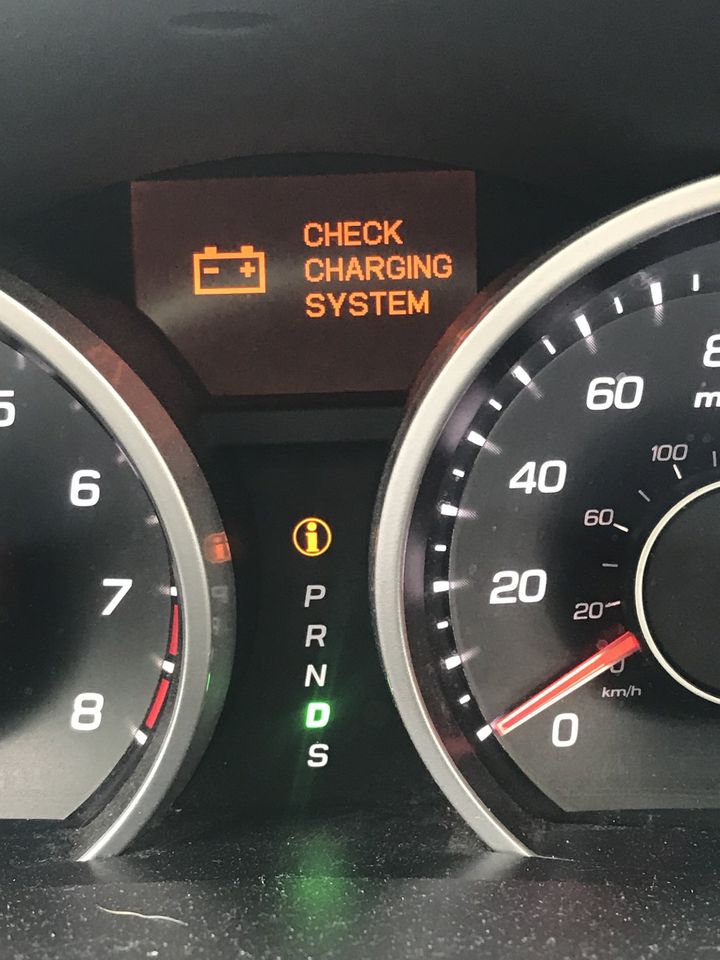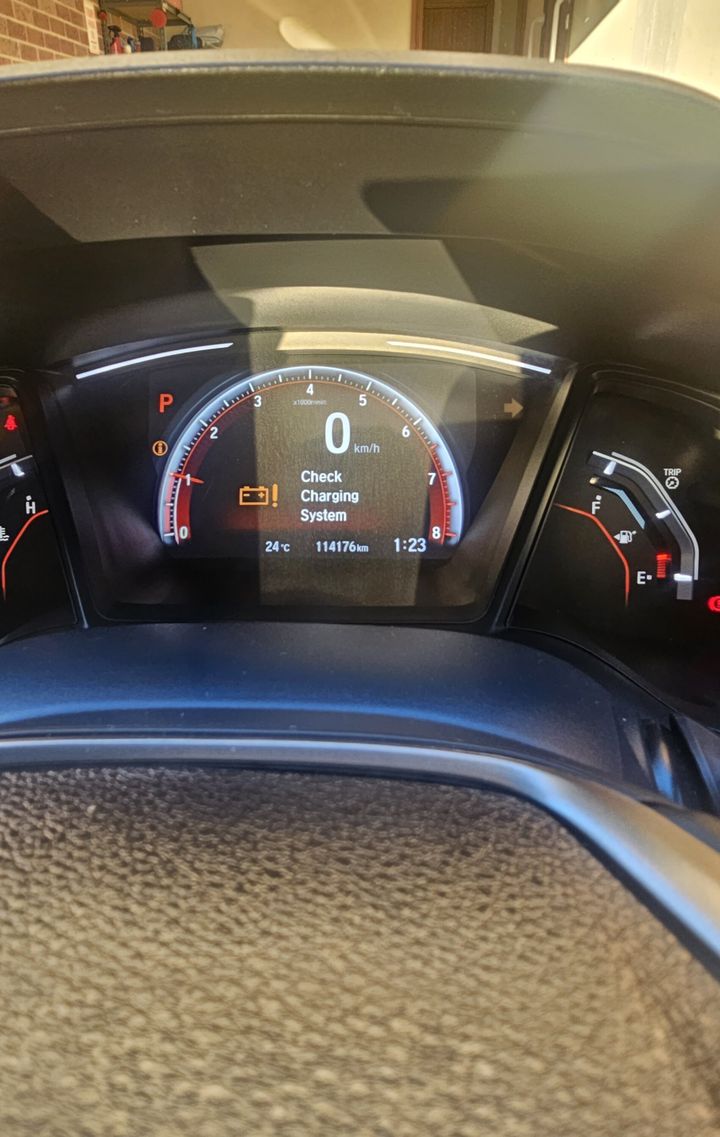


The illumination of the check charging system light on your vehicle's dashboard is a warning sign that should not be disregarded. This indicator signals an issue with the charging system, which is crucial for maintaining the battery's charge and providing electrical power to various components. Neglecting this warning can lead to a drained battery, electrical component failures, and potential safety hazards if your vehicle stalls unexpectedly.
This comprehensive guide will explore the common causes of the check charging system light, diagnostic methods, repair solutions, preventive maintenance tips, and the importance of seeking professional assistance when needed. By understanding the underlying issues and taking prompt action, you can ensure a reliable and safe driving experience.

The charging system is a vital component of your vehicle's electrical system, responsible for maintaining the battery's charge and supplying power to various electrical components. Let's first understand its function and components:
| Component | Function |
|---|---|
| Alternator | Generates electrical power and charges the battery while the engine is running. |
| Battery | Stores electrical energy and provides power to start the engine and operate electrical components when the engine is off. |
| Voltage Regulator | Controls the alternator's output voltage, ensuring proper battery charging without overcharging. |
| Wiring Harness | Connects the alternator, battery, and other electrical components, allowing the flow of electrical current throughout the system. |
A properly functioning charging system ensures:
The battery remains charged, preventing it from draining and leaving you stranded.
Electrical power is provided to various components, such as lights, infotainment systems, and safety features.
The longevity of the battery and other electrical components is maintained by regulating voltage and current flow.
Overall reliability and safety of your vehicle by preventing electrical failures and potential hazards.
The check charging system light can illuminate due to various issues within the charging system. Here are some of the most common causes:
The alternator is the primary component responsible for charging the battery and supplying electrical power. If it fails or malfunctions, it won't be able to properly charge the battery, triggering the warning light.
Signs of a faulty alternator:
Dimming headlights or interior lights
Electrical accessories not functioning properly
Battery draining quickly, even after being charged or replaced
An old or defective battery may not be able to hold a charge properly, causing the charging system light to come on.
Signs of a worn-out battery:
Slow engine cranking or difficulty starting
Dimming lights or electrical accessories
Swollen or leaking battery case
The alternator is driven by a belt connected to the engine. If this belt is loose, worn out, or damaged, it can prevent the alternator from functioning correctly, resulting in a charging system warning.
Symptoms:
Squealing or chirping noises from the belt
Visible cracks, fraying, or glazing on the belt
Alternator not charging the battery properly
Poor connections at the battery terminals due to corrosion or loose cables can disrupt the flow of electricity, leading to charging system issues and triggering the warning light.
Signs:
Corrosion buildup on the battery terminals
Loose or damaged battery cables
Intermittent electrical issues or warning lights
Damaged or faulty wiring between the alternator, battery, and other components of the charging system can cause the warning light to illuminate.
Symptoms:
Intermittent electrical issues or warning lights
Burning or melted wire insulation
Visible damage or corrosion on wiring harnesses
The voltage regulator controls the output voltage of the alternator. If it malfunctions, it can cause overcharging or undercharging of the battery, triggering the warning light.
Signs:
Battery overcharging or undercharging
Electrical components not functioning properly
Alternator not charging the battery correctly
To accurately identify the root cause of the check charging system light, a thorough diagnosis is necessary. This typically involves a combination of visual inspections and electrical testing.
A visual inspection can often reveal obvious signs of potential issues within the charging system:
Checking the battery for damage, corrosion, or leakage
Inspecting the alternator belt for wear, cracks, or improper tension
Examining wiring harnesses and connections for damage, corrosion, or loose connections
While visual inspections can provide valuable clues, electrical testing is often necessary to pinpoint the exact cause of the charging system issue:
| Test | Purpose |
|---|---|
| Battery Load Test | Measures the battery's ability to hold a charge and deliver sufficient current under load. |
| Alternator Output Test | Measures the alternator's ability to generate the correct voltage and current output. |
| Voltage Regulator Test | Checks the functionality of the voltage regulator by measuring the output voltage of the alternator under various load conditions. |
Modern vehicles are equipped with on-board diagnostic systems that can provide valuable information through diagnostic trouble codes (DTCs). These codes can help pinpoint specific issues within the charging system and guide the repair process.
Once the root cause of the charging system issue has been identified, appropriate repairs or replacements can be made to resolve the problem:
Alternator Replacement
Battery Replacement
Belt Adjustment or Replacement
Cleaning Battery Terminals
Wiring Repairs
Voltage Regulator Replacement
Regular preventive maintenance can help minimize the risk of charging system issues and extend the lifespan of your vehicle's electrical components:
Regular battery inspections for signs of corrosion, leakage, or damage
Alternator belt checks for condition and proper tension
Wiring harness inspections for damage, corrosion, or loose connections
Periodic diagnostic checks of the electrical system, including the charging system
While some charging system issues may be relatively straightforward to diagnose and repair, others can be more complex and may require professional assistance.
When to Seek Professional Help:
You are unsure about the root cause of the charging system issue
The problem persists after attempting repairs or replacements
You lack the necessary tools or expertise to diagnose or repair the issue safely
Benefits of Professional Diagnosis and Repair:
Accurate diagnosis with specialized diagnostic tools and expertise
Proper repairs performed correctly, using the right tools and procedures
Safety protocols followed, reducing the risk of injury or further damage
Warranty protection on parts and labor
Choosing a Reputable Auto Repair Shop:
Positive customer reviews and ratings
Certifications and qualifications of technicians
Warranty policies and customer service
Availability of specialized diagnostic tools and equipment
Addressing charging system issues promptly is not only important for the proper functioning of your vehicle but also for your safety.
Risks of a Faulty Charging System:
Drained battery, leaving you stranded
Electrical component failures, affecting critical systems like lights, safety features, and infotainment systems
Potential fire hazards due to electrical shorts or overheating
Importance of Prompt Repairs:
Prevents further damage and ensures reliable operation of your vehicle
Avoids costly repairs or potential safety hazards
Avoiding Roadside Breakdowns:
A well-maintained charging system can help prevent roadside breakdowns caused by a drained battery or electrical failures
Regular maintenance and addressing issues promptly minimize the risk of being stranded and ensure a safer driving experience
The check charging system light is a critical warning indicator that should never be ignored. By understanding the common causes, performing proper diagnosis, and addressing the underlying problem promptly, you can ensure a reliable and safe driving experience. Regular maintenance and seeking professional assistance when needed can help prevent charging system failures and extend the lifespan of your vehicle's electrical components.
Alternator replacement costs typically range from $400 to $600 including parts and labor for most vehicles.
You can test your car battery yourself using a basic multimeter to check the voltage and see if it needs to be recharged or replaced.
Leaving electrical accessories like lights or radio on when the engine is off can drain the battery quickly. Faulty alternator or loose battery connections can also cause excessive drain.
Most car batteries need to be replaced every 3-5 years depending on driving conditions and battery type.
Yes, a worn out, loose or damaged alternator belt can prevent the alternator from spinning properly and charging the battery sufficiently.
The voltage regulator controls the voltage output from the alternator to the battery to prevent overcharging or undercharging.
Signs of a bad alternator include dimming headlights, battery not charging properly, and electrical accessory issues.
You can drive temporarily but the battery will eventually drain, so you should get the charging system checked as soon as possible.
Growling or whining noises from the alternator area could mean the alternator bearings are going bad.
Regular inspections, cleaning battery terminals, replacing old batteries and belts can help prevent many charging system problems.

Miguel started tinkering with car radios as a teenager, fascinated by the intricate dance of wires and circuits. This passion led him to pursue a career as an automotive electrician. For the past 10 years, Miguel has tackled everything from flickering headlights to mysterious electrical gremlins. He thrives on troubleshooting electrical problems and enjoys sharing his knowledge to empower car owners to understand their vehicles better.



